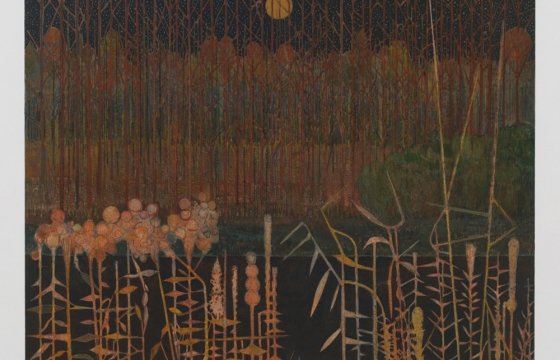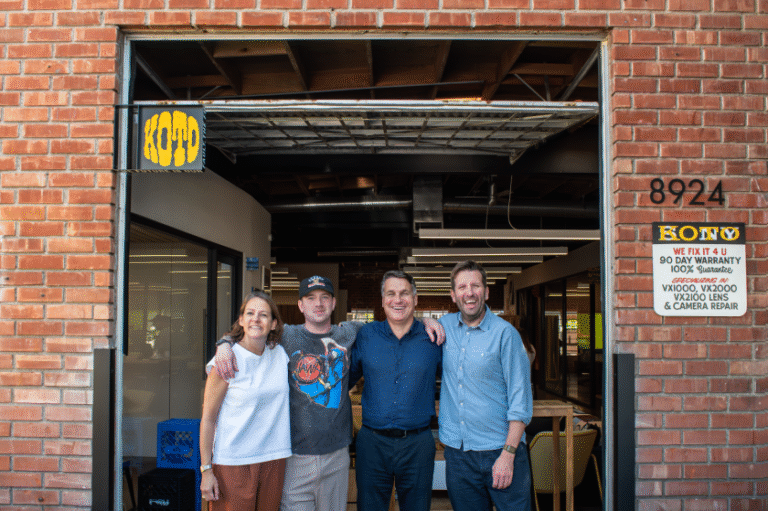

Image licensed via Adobe Stock
Three years in and barely surviving? You’re not alone. Here’s how to decide whether to stick with freelancing or try something new.
Welcome to the fifth in our advice series, Dear Boom. This week, we’re exploring one of the most agonising decisions a creative can face: whether to throw in the towel on self-employment.
One reader writes: “I’ve been freelancing for three years, but it feels like I’m constantly hustling for scraps. I love the freedom, but I’m exhausted and broke. Every job feels like survival mode. Is it time to admit freelancing isn’t for me?”
If you’re nodding along, you’re far from alone. The past few years have been brutal for freelancers across the creative industries. AI, economic uncertainty, tighter budgets, and fierce competition have left many wondering whether the dream of independence is worth the constant anxiety.
But here’s the thing: struggling doesn’t automatically mean you should quit. Sometimes it means you need to pivot, refine your approach, or simply give yourself more time. To help anyone wrestling with this question, we reached out to creatives on our Instagram who’ve been exactly where you are now.
Give it more time
Let’s start with something many people don’t want to hear but need to: three years really isn’t very long. As illustrator Ollie Hirst puts it: “This isn’t enough time to establish yourself fully. Freelancing is always the tough route, but as this person says, the freedom and potential payoff are huge.”
Graphic designer Keith Dodds agrees, and speaks from some experience. “I was almost here myself after an awful 2024, but this year I’m on course to be my best financially since I went freelance 12 years ago,” he reveals. “There’s definitely something to be said for just riding it out and not giving up.”
But he admits that’s not easy. Desperation kills creativity. When every enquiry feels like a matter of survival, it’s impossible to do your best work or make strategic decisions.
“I worked in advertising full-time for four years alongside building a freelance illustration career,” he explains. “Having that day job took the financial pressure off me and gave me space to explore and find my freelance feet. When freelancing is your only income initially, it creates nothing but desperation.”
Art director Tim Easley agrees. “If you’re ‘hustling for scraps’, it sounds like full-time freelancing might not be for you,” he says. “Remember, you can always take smaller gigs on the side of a PAYE job, and there’s no shame in working part-time to pay the bills and allow you to cherry-pick the freelance bits.”
As artist Mel Langton puts it: “Never be afraid to take a side job to keep you afloat. It’s not failure, it’s just all part of self-preservation and keeping your dream afloat.”
Think like a business owner
Here’s another uncomfortable truth: being brilliant at your craft doesn’t automatically make you good at running a business. Freelancing demands skills that have nothing to do with design, illustration, or photography, and that’s where many creatives struggle.
For this reason, illustrator and designer Amy Slatem urges you to shift your mindset entirely. “Think of yourself more as a business owner than a freelancer,” she says. “Actively network, market, outreach, and position yourself as an expert who solves a specific problem.”
Doing so will help you deal with the feast-or-famine cycle, one of freelancing’s cruellest features. Because as illustrator and animator Ellie Foster notes, balancing doing work with searching for work is a tricky balance. “Often when you’re caught in the hustle, it can be hard to find time for outreach,” she says. “But then, when the project ends, you’re in panic mode, looking for the next. When freelancing works well for me, it’s because I work cold emails, batching content, etc, into my routine, and the next project is queued up before I finish.”
Brand and packaging designer Maryam El Sada adds that it’s not just about finding new clients. “Invest time and energy with your existing ones, so they’ll always be eager to work with you on next projects or recommend you for others.”
Brand strategy consultant Richie Meldrum believes that terminology matters, too. “I’d recommend moving away from positioning yourself as a freelancer,” he suggests. “Makes people think fast, cheap and disposable. ‘Independent designer’ is a better option.”
Diversify your income
It doesn’t matter how talented you are; at the end of the day, putting all your eggs in one basket is risky. So artist and illustrator Luis-Manuel Lambrechts recommends spreading the load. “You can create illustrations, books, murals, give art courses and workshops, make art and sell it in shows, create prints, etc.”
Mel has discovered this through experience. “I’ve really had to learn to pivot, evaluate what’s working, what isn’t, what I want to do more of, and what’s absolutely not bringing me joy or serving my business,” she reflects. “Most of the work I’ve done over the past five years is work I’d never have dreamt of, and often out of my comfort zone.”
Meanwhile, illustrator Priscilla Tey has found her safety net in education. “When I hit a dry spell, I hop back into conducting workshops and lessons in schools,” she explains. “It’s not glamorous work, but it can be fulfilling, provide some income and inject perspective into your freelance career.”
Remember why you started
When you’re exhausted and broke, it’s easy to forget what drew you to freelancing in the first place. Illustrator Lennart Menkhaus believes the decision comes down to purpose. “I think you shouldn’t freelance just for the sake of freelancing, but because of the job you truly want to do,” he says. “In the end, I believe it all comes down to one question: how much do you really want to pursue this profession, and how important is freedom to you?”
Illustrator and designer Jack William Martindale offers another perspective. “It’s always worth remembering that we never created as kids to get paid, we did it because it makes us happy inside,” he reflects. “Whilst putting food on the table is important, keeping the love for the craft going is too.”
And when times get tough? Brand designer Steve Krentz frames it as a test of character. “If you don’t enjoy the challenge, or the freedom, of doing things your own way, freelancing might not be for you,” he acknowledges. “And that’s okay; it’s hard. But when things are finally going well, sustainably so, it’ll be the best decision you’ve ever made.”
What’s the answer?
So, should you give up? The honest answer is: maybe. But probably not yet.
If you’re three years in and constantly stressed about money, that’s a sign something needs to change. But it doesn’t necessarily mean abandoning freelancing altogether. It might mean finding part-time work to ease the pressure. It might mean diversifying your income streams. It might mean refining your portfolio or being more strategic about the work you pursue.
Which direction, though, should you choose? Priscilla offers some sage advice here. “It’s important to be flexible in this day and age, but pivoting too much or too frequently can read as chaotic,” she observes. “The trick is to know where the anchors in your practice are. What is the heart and soul of your practice that doesn’t flinch? And where are areas you’re willing to be flexible with?”
The truth is that the path forward isn’t the same for everyone. Some people thrive on the uncertainty and variety of freelancing. Others find the stability of a salary more conducive to their creativity and wellbeing. Neither choice is wrong.
What matters most is being honest with yourself about what you need, both practically and emotionally. If freelancing is making you miserable despite your best efforts, there’s no shame in choosing a different path. Employment isn’t failure; it’s just a different way of using your talents.
But if you still feel that spark—if the idea of giving up makes your stomach drop—then don’t. Adjust your approach, seek support, and give yourself permission to do it differently. Because freelancing isn’t one-size-fits-all, and struggling doesn’t mean you’re doing it wrong.
Sometimes it just means you’re still learning. And that’s okay.


